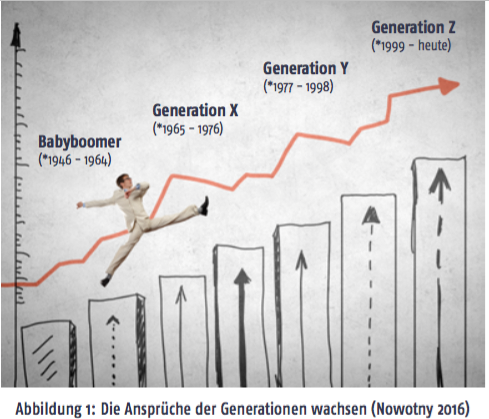We are now an “agile company” and we want to lead in a more agile manner! One hears this sentence very often from German managers. As Nowotny says in his book “agile companies – only what moves can improve”: We conjure up the spirit of Silicon Valley and break up the gray layers of clay in the company. A rethink should take place, away from philistinism. Everyone should get involved and the “German fear” should be taken away. But why are we doing this and are we doing the right thing at all?
Companies move, because only what moves can change or what do you mean? Apparently this thesis is correct, because former startups such as Tesla, Amazon and Apple, which are now global corporations, make established corporations such as Daimler, VW, DHL and Rolex sweat (Nowotny 2016, p. 23ff). A vehicle development in just three hundred and sixty days like at Tesla? The delivery of parcels by drone on the same day, as with Amazon? Can an innovative watch from AppleWatch soon attack established brands like Rolex head-on? But what makes these companies so special? They have integrated agile methods into their daily work and have established an agile “mindset” in the company in recent years. Courageous, innovative and agile, these agile companies and startups rush like hungry wolves into new markets and opportunities that the established companies are currently not touching (Nowotny 2016, p. 23). You can read about a more detailed characterization of an agile company in my other article on Look at definition of agile and evolutionary companies .
Why are companies suddenly agile?
In his book Nowotny shows which reasons actually speak for becoming an agile company and how managers lead more agile. In addition to the reasons already mentioned in the blog for the necessity of agility (customer satisfaction, etc.) Nowotny provides another approach that is very exciting: namely, the demands of generations on companies are growing.

You can clearly see in the picture that every generation makes more demands on companies. While the Baby Boomers were apparently still satisfied with being in the company at all, Generation Y is only screaming for participation and managers don’t want to imagine what requirements Generation Z will have. This approach clearly makes sense, since employees are the greatest asset of a company and many companies are desperately looking for employees. I always notice this myself when I get new offers to change companies every day through my consulting job. I also notice that many companies cannot cope with the fact that an applicant has more options or a permanent employee could change at any time. So how can you, as a company without agility, find an employee at all when they have 30 more offers? There is even already Agile HR approaches which will be explained in another article. The aim of every company should therefore be: lead more agile in the face of demographic change.
What actually is an agile company and can we lead in a more agile way?
The reasons are really very well listed and there is a lot to suggest that agile companies are also future-proof companies. But it is still not entirely clear what exactly the interpretation of an agile company is. Scrum alone is not enough to be really agile. Maybe it is one of the concepts around Sociocracy, Holocracy, or Democracy the answer. But it is not yet certain and we still have to do some case studies whether this is really agile and evolutionary. I have already described what about this in another article agile and evolutionary companies . As the research continues, I will now observe agile companies and conduct case studies. The aim is to find out whether this really brings an improvement and whether the models are really agile.
[werbung] Verwendete Quellen anzeigen
Nowotny, V. (2016). AGILE COMPANIES – FOCUSED, FAST, FLEXIBLE: Only what moves can improve . Berlin: BusinessVillage.



